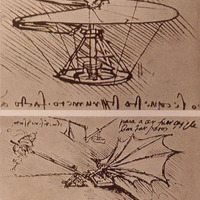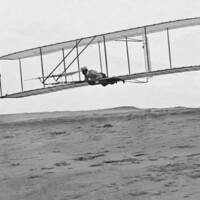Heavier Than Air
While the modern concept of flight began in the 1480s with Leonardo da Vinci, it was not until the 19th century that large strides were made with “heavier-than-air” crafts; not until the 20th century was the first successful controlled flight truly achieved. While the Wright brothers were the ones to achieve this feat, Samuel Langley was also working on developing flight during the same period. However, the Wright Brothers stood out at the forefront of flight innovation, achieving soaring successes where others crashed, quite literally. However, regardless of who achieved flight first, “heavier-than-air" crafts were built upon the success and discoveries of many innovators, from da Vinci’s drawn dreams to the beginnings of gliders and finally to the first controlled aircraft.



